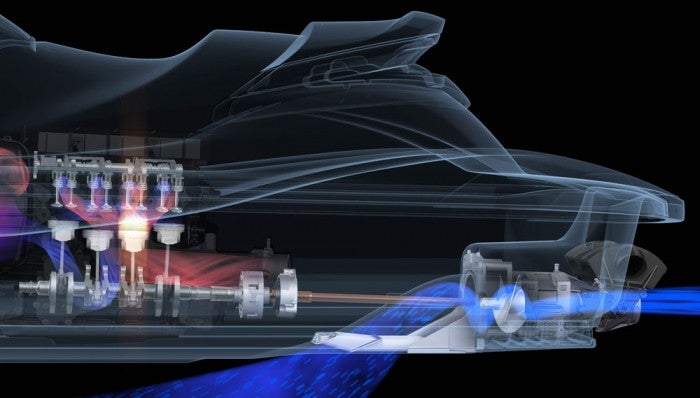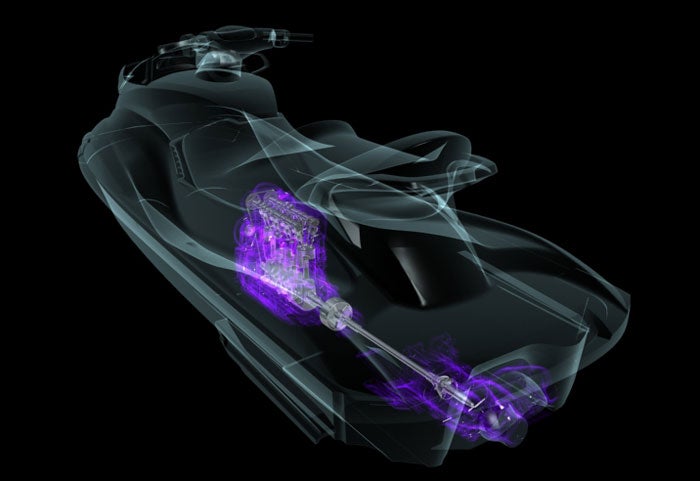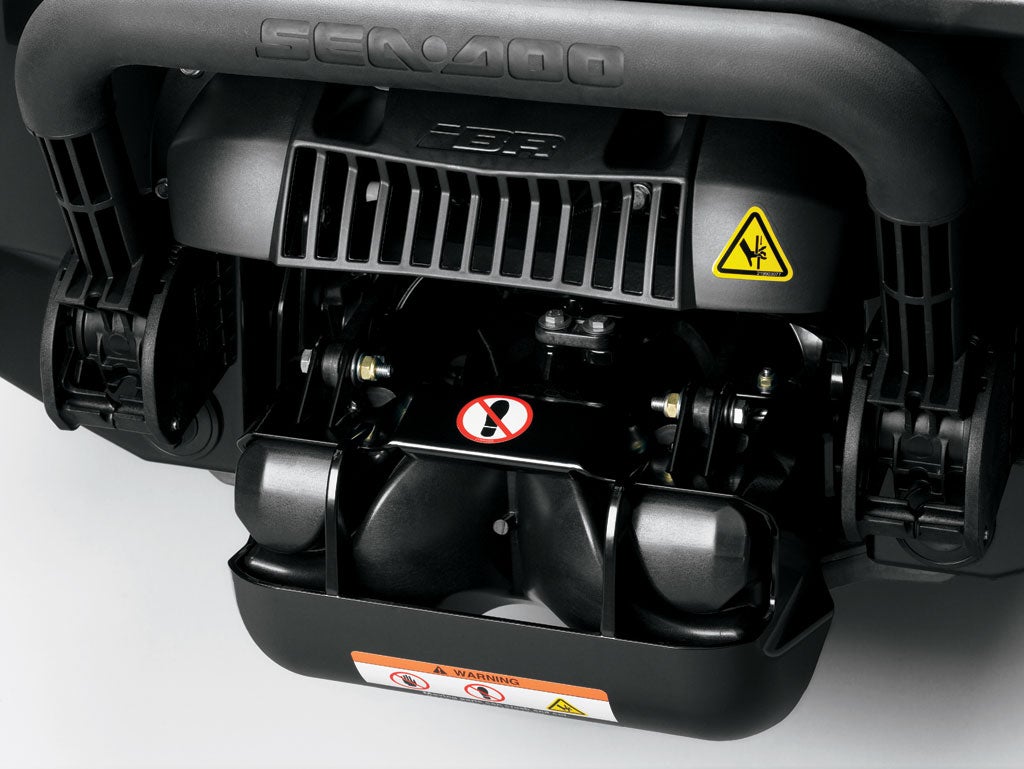Understanding Jet Propulsion
This is how your PWC actually works
The key to the success of the personal watercraft market can be traced to several factors, but above all one clearly stands out – jet propulsion. It not only gives a PWC its unique performance and agility, it provides the necessary safety factor for a craft so intensely “personal.”
Think about it. Traditional propellers would be a nightmare on such a small craft that doesn’t enclose or surround the rider, as they’re exposed. Jet pumps tuck all the whirling parts within the cylindrical pump enclosure, safely out of reach. This configuration also means a PWC can operate in shallower water, and should it run aground, likely won’t suffer serious damage.
But just exactly how does jet propulsion work? Here’s a brief explanation of this critical component of our favorite watercraft.
Under Pressure
Engines get much more of the spotlight, but it’s the pump that actually translates that engine’s potential into usable power to push your craft forward through the water. As the engine turns over, it rotates, or spins, a driveshaft extending backward from the engine and passing through the hull. At the end of that driveshaft, within the safe confines of the jet pump, is the impeller which, when connected to the driveshaft, spins in unison. Give your craft a blast of throttle and that impeller spins faster; release the throttle to idle and that impeller spins slower. Unlike a gear-driven propeller, however, that impeller is always spinning when the engine is running. It doesn’t stop or reverse direction, it just spins.
The result of all that whirling, at least on the inlet side of the pump, is the creation of negative pressure. It’s this pressure that “pulls” or sucks water into the pump cavity. As the water passes through the swiftly rotating impeller, that pressure becomes positive. The impeller is now “pushing” the water back toward the pump outlet.
Before it gets there, however, it must be straightened. If left to leave the pump in a spiraling motion, it would cause the craft to literally tilt to one side from the force. The task of straightening this flow falls to the stator veins, short, fin-like protrusions within the pump. The stator veins not only straighten out the flow, they also enhance its velocity. What really provides the force, however, is the portion of the pump that follows – the venturi. The funnel-shaped cone that most people equate with the jet pump’s outlet or “nozzle,” the venturi effectively acts in the same way your thumb would when placed over the end of a fast-flowing garden hose. It reduces the line size, and causes the water’s velocity to increase. This accelerated blast of water then pushes your craft forward.
Redirecting the Flow
If left alone, that force would just push the craft forward. Unlike traditional boats, PWC don’t have rudders to control their direction. The only way to steer the craft is to redirect the pump’s thrust in the appropriate direction. Enter the steering nozzle. Linked via cable to the handlebars, this nozzle is attached to the venturi and pivots from side-to-side to redirect water flow according to the driver’s input at the handlebars. Turn the bars to the left or right and the steering nozzle responds in kind, redirecting the thrust to push the craft in the desired direction.
So how does a personal watercraft move in reverse? The same concept applies. Remember, water is always flowing out of the pump. To push the craft backwards, that water must be redirected forward. The steering nozzle couldn’t possibly handle this task. Instead, a reverse “bucket” drops into the flow and, with its curved shape, redirects the thrust forward. Steering still applies. Water is simply sent forward in relation to the angle it reaches and is deflected by the reverse bucket. Manufacturers have also begun to shape reverse buckets to more effectively direct water in the desired direction.
Neutral? Like reverse, there’s really no such thing, at least in the gearing sense. To achieve a neutral-like position, the reverse bucket just partially deploys. Water is redirected down, rather than forward or back, effectively keeping the craft in a stationary position.
Get PersonalWatercraft.com in your Inbox!
Like PersonalWatercraft.com on Facebook
Comments
Most Popular

2025 Yamaha JetBlaster PRO 2-Up Review

Remembering the Sea-Doo XP

2024 Kawasaki Jet Ski STX 160X Review

Whatever Happened to the Wetbike?

2025 Yamaha JetBlaster Review















 Your Privacy Choices
Your Privacy Choices